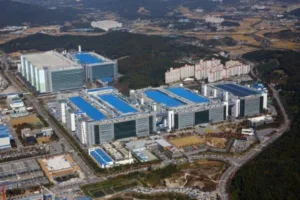The ET Times in Korea has reported that Samsung has started to finalise a plan for a new OLED fab (tentatively called ‘A5’) which will have capacity of 180,000 G6 substrates per month, expandable to 270,000 and has started negotiating for equipment, which is how news broke. The plant would be 33% bigger than the current A3 OLED plant. The company board is due to finalise the decision next month, the paper said.
The plant is unlikely to be ready for production until early 2019 if work starts this year. Estimates are that Samsung will need to invest $14 billion in equipment at the fab to achieve this capacity, on top of around $1.75 billion for the factory itself. The scale of the investment is such that the investment may take as long as three years to complete (and as we reported from the SID Business Conference, there are restrictions on the supply of critical equipment including photo lithography).
The paper said that in addition to this huge plant, Samsung is thinking about building two additional plants with 135,000 capacity, each, the same size as the current A3 plant which is still bringing equipment in.
Analyst Comment
I liked the comment in the ET Times that Samsung may be playing a ‘game of chicken’ in OLED. It seems to me that this should work well against traditional competitors such as LG Display and AUO. However, although it might raise the stakes for the potential Chinese competitors, especially BOE, it seems unlikely to stop it. However, the restrictions on supply of equipment are real and Samsung can potentially monopolise the supply side. Equipment makers won’t like it, but Samsung is a long standing company that can pay, so it will be hard to resist. Samsung will also have very large scale that will help it to keep its costs well below any competitor, meaning potentially a long loss-making period for any possible competitor. ET Times said that this is the strategy that Samsung employed in its memory business.
More than thirty years ago, I worked in the steel industry. A local company used to buy big shipping containers with a special steel section used that had very restricted supply. A small contractor realised that by booking the source materials when it received an enquiry, it could force out the delivery dates for later enquirers, forcing them to quote much longer delivery dates. Although there was some risk, winning that business turned it from a small sized company to a mid-sized company quite quickly with this technique!
As well as meeting the demand that Apple is making for flexible smartphone displays, the plant would be needed if products based on larger foldable displays are successfully developed and launched as the area of display is that much bigger.

